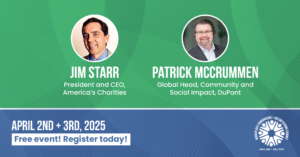Sarah Ford | September 26, 2013
Past, Present, and Future: Research and Treatment Advances in Pediatric Cancers
Fifty years ago, the most common type of childhood cancer, acute lymphoblastic leukemia (ALL), was almost uniformly fatal. Today, cure rates for ALL can reach as high as 90 percent. Much of this success is due to the early and groundbreaking work of Memorial Sloan-Kettering physician-scientists.
“The introduction of chemotherapy in leukemia was a huge undertaking,” says pediatric oncologist Paul A. Meyers. “It happened pretty much simultaneously at what is now the Dana-Farber Cancer Institute [formerly the Children’s Hospital of Boston], and here at Memorial Sloan-Kettering. The effort was led by people like [medical oncologists] Joseph Burchenal and David Karnofsky, and [pediatric oncologist] Lois Murphy. Dr. Murphy was one of the first pediatricians to work in Memorial Hospital and collaborating with Drs. Burchenal and Karnofsky, she was among the first to treat children with chemotherapy.”
A number of drugs that are now standard agents for the treatment of leukemia were first introduced at Memorial Sloan-Kettering, including l-asparaginase and the anthracyclines doxorubicin and daunorubicin. “And some of the very first clinical trials that used combination chemotherapy were also done here,” says Dr. Meyers. “That concept — of putting drugs together to treat cancer — also had its genesis here.”
And within the last decade, a new drug for the treatment of childhood leukemia, clofarabine, was approved by the US Food and Drug Administration on the strength of work done by Dr. Meyers and his colleagues.
The Future
“There are lots of exciting things happening right now,” Dr. Meyers says. “In particular, cell-based immune therapies hold enormous promise.”
In addition to using immune cells to attack viral infections that can arise in patients going through transplant, Memorial Sloan-Kettering physician-scientists are now using them to attack tumors that arise in response to certain viruses, like Epstein-Barr. “We’re also using adoptive immunotherapy as a strategy for targeting cancer cells that produce certain proteins abnormally,” says Dr. Meyers.
One of these is WT-1, a protein that is overexpressed in a range of leukemias and other cancers. “We are growing T cells directed against WT-1 in the laboratory to treat patients for whom standard therapy has failed to control their disease,” he explains.
“We also have an active program using chimeric antigen receptors, which allow T cells to target antigens on the surface of a tumor cell. We’re now doing this in pediatric leukemia and have had dramatic successes,” says Dr. Meyers. “Kids who have failed every known therapy get treated with these genetically modified T cells and go into remission. It’s an amazing accomplishment.”
Standard treatment for a neuroblastoma (a tumor that arises from primitive cells of the sympathetic nervous system) has been intensive chemotherapy, often combined with stem cell transplantation. But for more than 20 years Memorial Sloan-Kettering investigators have used an antibody called 3F8 in combination with surgery and chemotherapy to treat neuroblastoma, and have significantly improved cure rates for children with high-risk disease.
“We’re now about to embark on a phase III clinical trial to treat osteosarcoma with 3F8, because osteosarcoma expresses the same antigen that is expressed in neuroblastoma,” Dr. Meyers reports. Memorial Sloan-Kettering physician-scientists are also studying the use of newer antibody-based therapies to fight neuroblastoma and other cancers, including a rare tumor that arises in the abdomen called desmoplastic small round-cell tumor.
In addition, Memorial Sloan-Kettering has a new gene therapy for the inherited blood disorder, thalassemia. “We believe it may have promise to cure — not simply to treat — this devastating disease,” Dr. Meyers says.
“I think most of us feel that chemotherapy has probably reached the limits of its ability to impact childhood cancers and that future advances are going to come from immune- and gene-based therapies,” he concludes.
Returning Children to Physical, Emotional, and Psychosocial Health
“When you’re treating a child you have to consider the consequences of that treatment for decades to come,” Dr. Meyers explains. “If we succeed in curing the cancer, you’re looking at 50, 60, 70 more years of life.” Because children have not yet physically, sexually, or intellectually matured, anything physicians do that may interfere with these processes can have long-term effects.
“We also have to think about the emergence of second therapy-related cancers,” Dr. Meyers says. “So with every treatment decision we make we want to be certain we’re giving treatments with the greatest possible chance for a cure but that also minimize both the short- and long-term effects of the therapy.”
Dr. Meyers and his colleagues work diligently with families, friends, teachers, and community-support networks to sustain children emotionally and socially through treatment. “We want to ensure that every child comes out of cancer treatment the same child that went in,” he says. “Of course we want to return them to physical health, but also to emotional and psychosocial health.”
Get Resources and Insights Straight To Your Inbox
Explore More Articles
Workplace Fundraising + Volunteering Summit (April 2nd and 3rd, 2025)
Join us in attending this virtual summit! The America’s Charities team is joining up with other leading voices in the workplace giving space for a…
Read ArticleThe Time to Act is Now
The results of the 2024 National Assessment of Educational Progress (NAEP) are in, and the findings are, in a word, heartbreaking. This assessment serves as…
Read ArticleOpen Position: Non-Profit Account Manager, Employee Assistance Funds & Scholarships (Remote – Full Time)
We are professional, agile, customer-centric and our goal is to inspire employees and organizations to support causes they care about. We help nonprofits fundraise unrestricted,…
Read ArticleGet Resources and Insights Straight To Your Inbox
Receive our monthly/bi-monthly newsletter filled with information about causes, nonprofit impact, and topics important for corporate social responsibility and employee engagement professionals, including disaster response, workplace giving, matching gifts, employee assistance funds, volunteering, scholarship award program management, grantmaking, and other philanthropic initiatives.




